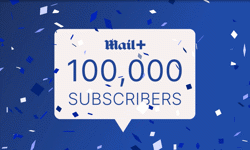At the Paywalls Strategies conference, organised by the Media Briefing, newspapers, B2B and consumer publishers shared their triumphs and disasters with paywalls, pay gateways, metered access and subscription options, building more of a roadmap for other content owners to follow. There was even a bit of glasnost apparent on the panel between Times Digital and Google…
Here are my top ten insights from the day:
1. Create a pay gateway not a paywall
Many publishers are finding that the most successful model of paid content is the metered approach, where readers can sample their content, either discovering it via search using first click free, or through a trial subscription. The Economist charges for its core weekly content, but allows free access to five articles via the weekly Editor’s Highlights, encourages social sharing and allows first click free via Google, runs blogs, polls, comments and editor discussions for free, intending to build a habit that could turn into a subscription. XpertHR provides a welcoming spread of content for casual visitors in the free part of the site, attracting HR execs who may not be able to authorise a full subscription but who become enthusiastic advocates. News is free, registered users get analysis and subscribers get templates and workflow tools. Farmers Guardian allows five free articles, then a question that permits ten more articles, and a longer questionnaire designed to help personalise online content.
2. Paid services are more complex than just content
In B2B markets, paid services have to offer more than just content, expanding into proprietary analysis tools, templates, workflow tools and even telephone access to researchers and analysts. Lloyds List offers subscribers infographics backed by deep data-sets, real-time email alerts, and iPad edition. Its premium service, Lloyds List Intelligence, includes ownership analysis, credit reports, and a phone line to their analysts. Incisive’s subscription products include email, portfolio tools and archives. Many publishers shared a variant of the FT’s tiered subscription page with a long tick list of benefits for each level. In the specialist consumer world, Autosport Plus, the subscription option for keen motorsport fans, includes images, infographics and an ad-free environment as well as exclusive features.
3. Focus on fans not flybys
The availability of better analysis tools, such as Scout Analytics, allowing publishers to see below the surface of aggregate statistics on web behaviour is revealing a split between passing trade and hard core readers. Incisive discovered that on FX Week, customers viewed seven pages and spent eight minutes, while visitors viewed just two pages. When Professional Pensions put up a paywall, editors were concerned, but only 25% of traffic was lost and just 15% of page views. Autosport Plus costs £5.50 a month. The free website has one million users worldwide. Only 1% subscribe, but they account for 11% of traffic, and 60% are non-UK, so not easily accessible as print subscribers. 15% of Autosport subscribers upgraded to pay for a digital facsimile edition of the magazine. When the Times put up its paywall, the volume of reader comments only dropped by half, and quality increased. Piano Media, a Slovakian paid content consortium, also saw forum comment quality increase behind the paywall. So, although headline numbers might be lower, there’s potential to sell higher value packages to your hard-core fans.
4. The value is in the audience not (just) the content
Quality content attracts a targeted community that is then likely to spend on additional services. Many B2B publishers have already developed conferences, breakfast briefings and events that bring together their audience as a significant revenue stream. Advanstar have developed a subscription-based e-learning service for the worldwide readership of their chromatography publications. Times Digital sells additional products built from archive content (eg collections of walks), to its digital subscribers. Pulse (recently acquired by Briefing Media) can charge pharma companies more for face to face access to a dozen influential GPs than a larger, generic audience.
5. Offer both subscriptions and micropayments
Publishers may favour subscriptions as they have a guaranteed income, more data on buyers, and can build a longer term relationship. But some people don’t want the commitment of a subscription, even if there is a financial advantage. A Danish tabloid newspaper offered online subscriptions at €4 a month, and single content purchases at €4 to €20 and saw a 2.5 times growth in micropayments alongside a three times growth in subscriptions. Interestingly, they did better with the higher priced content (eg travel guides) than with very low price points (under €1). So, perhaps some people would rather pay for what they want than spend time searching for a free alternative. However, most single content buyers were over 40, so younger generations of digital natives may be less willing to pay online. Autosport discovered that more people would pay 88p for a single article than 89p for a week’s subscription. Znakit offers an inventive alternative to micropayments with its system of online credits or znaks which can be used to purchase online content. So publishers would be wise not to rule out micropayments.
6. Create multi-platform subs: web, mobile, print…
Consumers are using a wide range of devices during the day to access content. Many publishers are seeing a peak of iPad access in the early morning and late evening, with web usage highest in the morning, and smartphones during commutes. So it is no surprise to see growth in multi-channel digital subscriptions. Economist subscribers get access on iPad, web and print; as do Times iPad pack subscribers. The Times has also seen strong sales on Kindle; despite its display limitations, they have 10,000 subscribers.
7. Use analysis to develop product
Access to enhanced statistics on the behaviour of different categories of registered users and subscribers allows publishers to tailor content to specific audiences. UBM’s Built Environment products looked at conversion rates for different segments, and discovered that investors and surveyors showed 7% conversions to paid, while architects were just 3-4%, creating an opportunity to develop a more tailored offering to that segment. Next generation analysis tools such as ADvance from Abacus allow publishers to identify target segments with poor renewals and respond with a specially crafted product.
8. Sell the true value of your audience to advertisers
As display ad yields continue their relentless fall, publishers need to demonstrate the true value of their audience and focus on sponsorship and integration packages. Duncan Tickell of Immediate Media advised publishers they must be able to offer good content, good tech and good design to ad clients, but the rewards are impressive: the Heinz / Made for Mums feeding channel and Top Gear microsite for Nissan both delivered quantifiable results for the clients and each earnt the publisher a six-figure sum. Times Digital’s iPad subscribers are a highly affluent group, with income over £100k, and now the company makes more from digital subs and ads combined than it did from ads only when online content was free. UBM’s Built Environment titles have moved away from ABC and have developed their own weekly audience measure aggregating email, digital and print plus tracking demographics and seniority, so far with good feedback from ad clients.
9. Replace journalists with analysts
In B2B markets, news is often on the free part of the site, and premium content is built around analysis, statistics and insights. This affects the composition of editorial teams. Lloyds List now replace journalists who leave the team with analysts, and the growth of infographics in their subs package raises the requirement for good graphic designers. However, analysts need to develop more journalistic skills, for example researching stats to provide extra depth to a news story in real time.
10. B2B and B2C can learn from each other
Business and consumer publishers face different challenges. Pricing subscription packages for consumer markets is harder as they need to be more standardised, and can be boxed in by competitive offers and artificial anchors such as print cover price. Business publishers can, by contrast, offer a range of different tiers and packages for different subgroups, and can justify far higher prices on the basis of creating value or limiting risk. Yet, consumer publishers can learn from their B2B peers by offering metered access or pay gateways and analysing subgroups of their audience. And all business people are also consumers of digital content in their leisure time, and the habits they develop there can be carried into the workplace. So, there is value in B2C and B2B publishers listening to and learning from each other’s experiences.
So, overall, there are good grounds for optimism on the ability of publishers to charge for online content. The black and white argument of free access vs paywall lockdown of a year ago has evolved into a far more subtle patchwork of free sample content open to search and social media, a trade of reader data for partial access, and a more tailored set of subscription options, and even one-off content sales. More flexible pay gateways could even help publishers escape from the tyranny of low display CPMs by demonstrating the true value of their audiences to advertisers.










